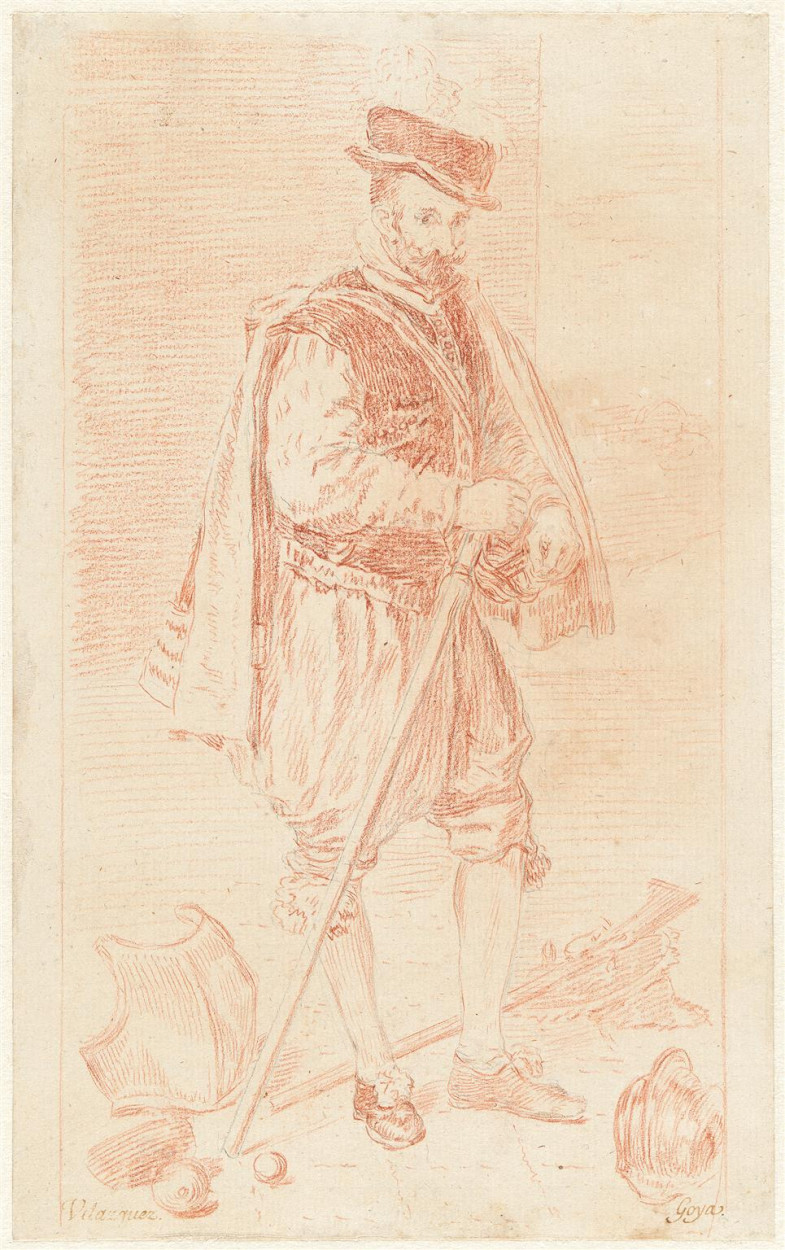Francisco José de Goya y Lucientes, Zeichner
Diego Rodríguez de Silva y Velázquez, Erfinder
Don Juan de Austria, Hofnarr Philipps IV. (Vorzeichnung für eine Radierung nach einem Gemälde von Velázquez), 1778-79 vor 1792
This is a preliminary drawing for the unpublished etching[1] after the painting by Diego Velázquez at the Museo Nacional del Prado;[2] a few trial proofs are known.[3] Like Barbarroja, Don Juan de Austria was also played by a court jester. In the Velázquez painting, the victory at the Battle of Lepanto (October 7, 1571) is alluded to through the wall opening. Here, Francisco de Goya omitted that level of meaning. In Goya's version, the soldier stands among his arms and armor, which lie on the floor, and the view onto a battle scene can be imagined only if one knows the original. The oval shape at Don Juan's back has also disappeared, and the square floor tiles are visible only in the foreground (they are wholly absent in the final etching). Goya concentrated solely on the figure. His Don Juan stands a bit straighter and more isolated, seems more uncertain, and, without the background of the painting, somewhat lost. While in Velázquez's painting, Don Juan de Austria was integrated into a more complex composition, in Goya's work, Don Juan no longer has any supporting apparatus and stands alone.
The gaze has also changed: in Velázquez's work the jester appears to smile behind his beard. In Goya's, he seems alienated and apathetic. The changes, in fact, lead to an "incongruity between costuming, attributes, and fragile figure."[4] However, the figure as a personality takes on greater importance in Goya, an aspect that is characteristic of that artist's work.
Jens Hoffmann-Samland
1 Harris 1964, no. 18
2 The Buffoon Called Don Juan de Austria, ca. 1632, oil on canvas, 82 5/8 x 48 48 in.
(210 x 123 cm), Madrid, Museo Nacional del Prado, inv. no. P 1200.
3 Hoffmann-Samland 2011, 292.
4 Hanna Hohl in Hofmann, Hollander, and Serullaz et al. 1980, 248.

